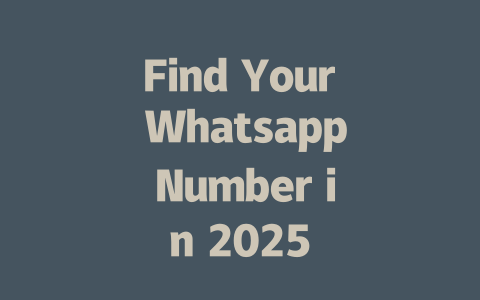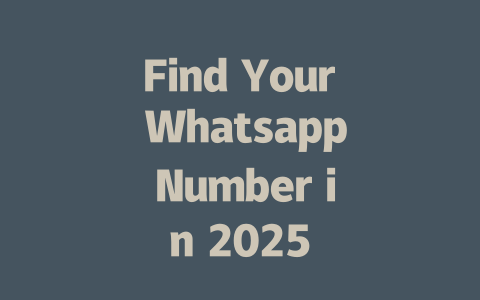Crafting Titles That Speak to Your Audience
Let’s start with something simple yet powerful: writing effective titles. Why does this matter so much? Because Google’s search robots look at your title first to figure out if your content matches what someone is searching for. Think about it—when you’re looking for information online, you probably skim through the results based on how relevant the titles seem. So, here are a few tricks I’ve picked up over time:
Google itself has emphasized that users should be able to tell exactly what they’ll get from clicking on a link. They even mention in their official blog (you might want to check it out) that clarity in titles builds trust. And trust leads to clicks.
Here’s another pro tip I discovered: test different variations of your title. When I wrote an article titled “How to Start a Blog,” it didn’t perform well. But after tweaking it to “Beginner’s Guide: How to Launch a Blog in Under an Hour,” the engagement skyrocketed! Sometimes rephrasing makes all the difference.
Common Mistakes to Avoid
There are certain pitfalls many people fall into when creating titles. Here’s a quick rundown:
To help visualize these concepts better, take a look at this table summarizing good versus bad approaches to titling:
| Type | Good Example | Bad Example |
|---|---|---|
| Conversational Tone | “Easy Ways to Declutter Your Desk” | “Top Strategies for Office Organization” |
| Keyword Placement | “DIY Room Makeover Ideas for Small Spaces” | “Ideas for Making Your Room Look Bigger” |
| Clarity | “Step-by-Step Guide to Installing WordPress” | “Learn Everything About Building Websites” |
As you can see, focusing on precise wording and user intent really pays off.
Writing Content That Feels Helpful and Relevant
Once you’ve got a catchy title, the next step is making sure your actual content delivers value. Remember, Google doesn’t just care about whether your page shows up in searches—it also checks if visitors stick around once they land there. If they immediately bounce back to the search results, it signals that your content wasn’t helpful enough.
So, how do you keep readers engaged?
Structure Matters
Break down your content logically. A well-organized piece flows naturally from one point to the next. Let me give you an example: if you’re explaining how to bake bread, each paragraph should build upon the previous one—starting with ingredients, moving onto preparation steps, then baking temperatures, etc. Readers appreciate coherence because it mimics how they’d naturally think through the process themselves.
Also, remember those little details that make a big impact. Use subheadings where appropriate, bullet points for lists, and short paragraphs to prevent overwhelming the eye. These small tweaks improve readability significantly.
Focus on Solving Problems
Every piece of content should aim to address a specific pain point. Ask yourself: What problem am I solving here? Is my audience clear on how this helps them achieve their goal? Anecdotes can come in handy here too—if you’ve personally dealt with similar challenges, sharing your experience adds authenticity.
For instance, last month I worked on a post about setting up email newsletters. Initially, I covered basic setup instructions, but feedback showed users needed troubleshooting tips as well. Adding sections like “What to Do If Emails Aren’t Sending” made the guide far more comprehensive and useful.
Final Thoughts Before You Hit Publish
Before finalizing any article, run it past a checklist to ensure quality standards are met:
Additionally, leverage tools like Google Search Console (don’t forget to add rel=nofollow tags). It provides insights into which pages perform best and highlights potential technical issues.
If you apply these strategies consistently, you’ll notice improvements not only in visibility but also in overall satisfaction among your readers. And hey, if you ever feel stuck or unsure about anything, feel free to drop me a line—I’m always happy to chat further!
If you’re wondering whether you can use Whatsapp without tying it to a phone number, the short answer is that it’s not feasible. The platform was designed with the premise that every user has a unique phone number, which serves as your digital ID within the app. This approach makes sense when you consider how messaging works—your contacts need something reliable to connect with you. It’s similar to how emails function, except instead of an email address, Whatsapp uses your phone number to route messages accurately. Without this, the whole system would break down, and finding friends or family members on the app would become nearly impossible.
That said, if avoiding phone numbers is important to you, there are alternatives worth checking out. Plenty of other apps allow for communication without requiring such personal information upfront. For example, some platforms let you sign in using just an email address or even create anonymous accounts. These options might suit people who prioritize privacy over convenience. But keep in mind, each app comes with its own set of trade-offs. You may miss out on features like seamless group chats or integrated voice calls that make Whatsapp so popular. If security is top-of-mind, spending 5-12 minutes researching these alternatives could open up new possibilities while maintaining your peace of mind.
# FAQs
How do I find my Whatsapp number if I’ve forgotten it?
If you’ve forgotten your registered phone number on Whatsapp, simply open the app and navigate to Settings > Account > Privacy. Your registered phone number will be displayed there. If it’s not visible, try logging out and logging back in to refresh your account details.
Can I change my Whatsapp number without losing my chat history?
Yes, you can change your Whatsapp number while keeping your chat history intact. Use the Change Number feature within Whatsapp’s settings. This process ensures your messages and media are transferred securely to your new number within the 5-12 day migration period.
Is it possible to use Whatsapp without a phone number?
No, Whatsapp requires a valid phone number for registration and verification purposes. The app uses this number to identify your account and enable messaging features. However, you can explore other apps that don’t require phone numbers if this is a concern for you.
Why can’t I verify my new number on Whatsapp?
If you’re unable to verify your new number, ensure that you have entered it correctly, including the country code. Also, check if your device has an active internet connection. If the issue persists, wait a few minutes and request a missed call or SMS re-delivery from Whatsapp.
How secure is my Whatsapp number on the platform?
Your Whatsapp number is secured through end-to-end encryption, ensuring only you and the recipient can read your messages. Additionally, avoid sharing your number publicly online to prevent spam or unauthorized access. Regularly update your app and review privacy settings for enhanced security.




